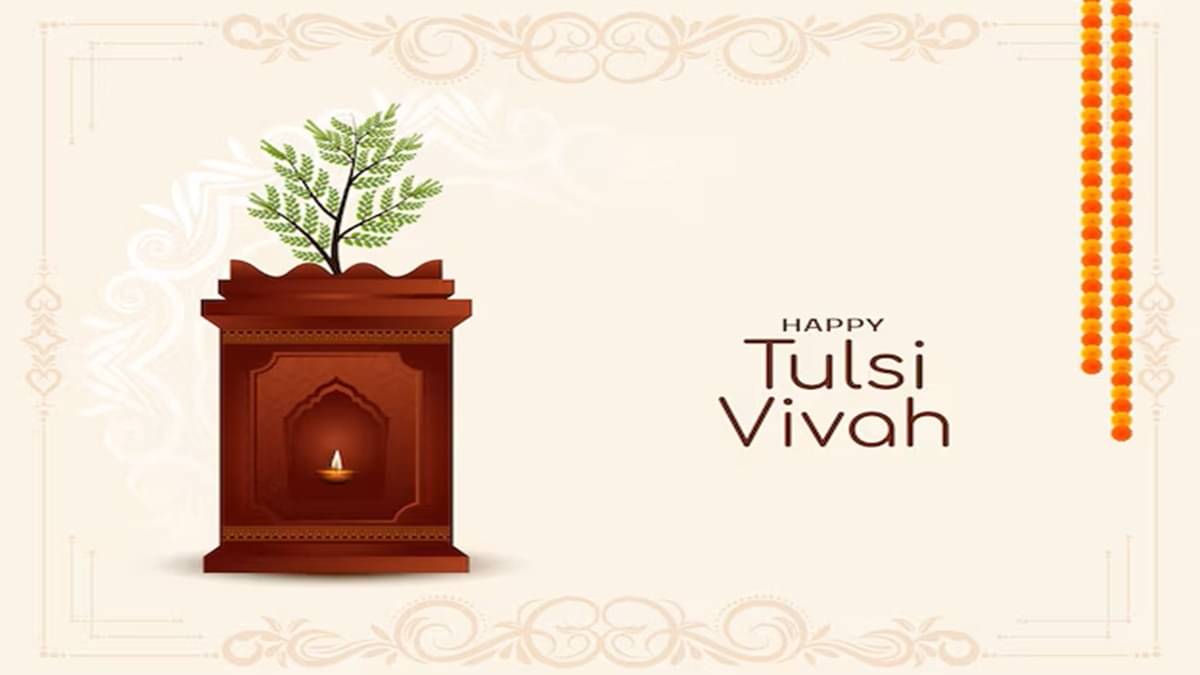Updated 29 October 2025 at 17:25 IST
Tulsi Vivah, also known as Tulsi Shaligram Vivah, marks the ritual marriage of Goddess Tulsi (Holy Basil) to Lord Vishnu or his incarnation, Lord Krishna. This divine union is one of the most sacred rituals in Hinduism, which symbolises the beginning of the wedding season in India.
There is often confusion about whether Tulsi Vivah falls on November 2 or 3. As per the Hindu calendar, the most auspicious date to observe Tulsi Vivah is Kartik Shukla Ekadashi Tithi (day Lord Vishnu awakens from his four-month slumber), which falls on Sunday, November 2.
The most auspicious muhurat for the celebration will begin on November 2 at 7:31 AM, which is Dwadashi Tithi (the twelfth lunar day of a lunar month). And will end at 5:07 AM on Monday, November 3rd.
Tulsi Vivah marks the end of Chaturmas (the four holy months) and the beginning of auspicious Hindu weddings. It signifies the union of devotion and divinity, inspiring devotees to lead a pure and righteous life. Devotees on this day observe fasts to seek the blessings of Goddess Tulsi and God Vishnu. It is believed that observing Tulsi Vivah fast removes obstacles, blesses couples with marital bliss and brings harmony and prosperity into homes.
According to ancient scriptures, Tulsi Vivah is linked to the story of Vrinda, who was a devout devotee of Lord Vishnu. Vrinda was married to the demon King Jalandhar, who not only became powerful but also invincible due to Vrinda’s devotion towards Lord Vishnu. He was invincible even against the gods. To bring back the universal balance and to prevent a demon king from becoming extremely mighty, Lord Vishnu disguised himself as Jalandhar and tricked Vrinda, which led to Jalandhar’s ultimate defeat and death.
Upon realising the truth, Vrinda cursed Lord Vishnu to turn into a black stone called Shaligram (a stone Hindus worship to date). After cursing Lord Vishnu, Vrinda sacrificed herself in the fire, and the Tulsi plant was born out of her ashes. Lord Vishnu was moved by her devotion and declared that the Tulsi Plant would be considered holy and prayed to as a goddess thereafter, and be married to him every year in the form of Tulsi Vivah.
READ MORE: Festivals And Important Days In November 2025: Tulsi Vivah, Kartik Purnima, Children’s Day And Others
Step 1: Take a holy bath and wear clean and nice clothes.
Step 2: Light up a diya in front of the Goddess Tulsi (holy basil plant) and Lord Vishnu idol.
Step 3: Adorn the idols with traditional wear.
Step 5: Now, apply Kumkum, haldi, mehendi, and garlands to the Goddess.
Step 6: Perform the sindoor ritual. You are advised to take vermillion and apply it to the Tulsi plant.
Step 7: Complete the marriage ceremony by offering fruits, sweets, and flowers to appease the deities.
Step 8: Perform aarti or recite mantras before breaking the fast.
Published By : Nimakshi Chanotra
Published On: 29 October 2025 at 17:25 IST
